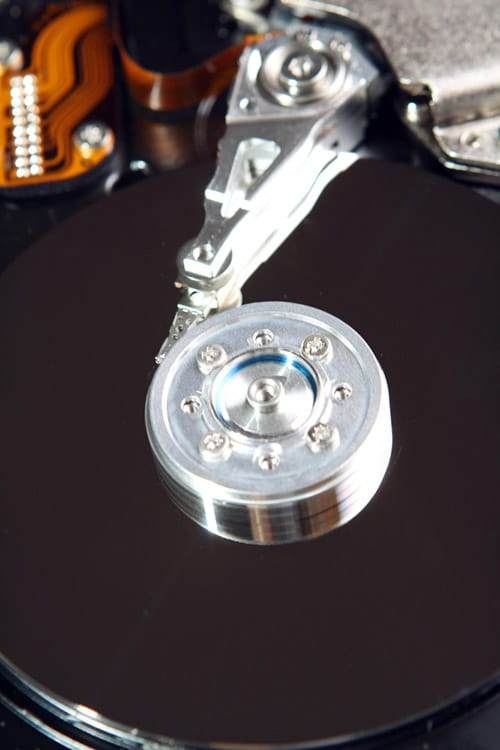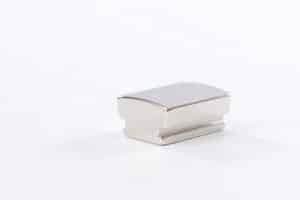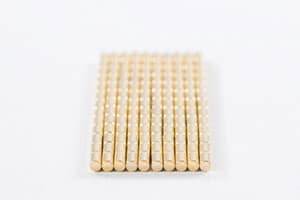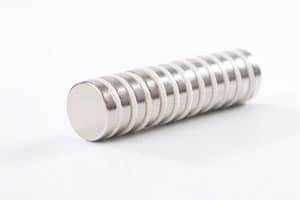Neodymium Magnets

Neodymium is a rare earth type of permanent magnet made from an alloy of neodymium, iron, and boron. Neo magnets are currently the strongest permanent magnets known. It is also one of the most abundant of the rare earth elements.
These magnets are cheaper, lighter, and stronger than samarium-cobalt magnets. However, neodymium magnets lose their magnetism at high temperatures. Samarium-cobalt magnets do not.
Neo tends to be vulnerable to corrosion similar to rusting, causing the magnet to weaken and eventually break down into a powder. This problem is solved by applying a protective coating. Nickel plating or nickel/copper/nickel plating is used as a standard method, although many other protective coatings are also in use.
It is not recommended to use the magnet without a protective layer. The application of the magnet will affect the choice of coating. For example gold plating is ideal for many medical applications, rubber coating provides additional friction, rubber coated zinc plating is used in marine environments, etc. AZ Industries is a bulk & wholesale supplier of all types of neodymium magnets.
Neodymium Magnet Coatings
Neodymium magnets have replaced Alnico and ferrite magnets in many applications where strong permanent magnets are required. The greater strength allows the use of smaller, lighter magnets in many applications.
- Titanium (Ti)
- Tin (Sn)
- Silver (Ag)
- Gold (Au)
- Zinc (Zn)
- Epoxy
- Nickel (Ni)
- Nickel-Copper-Nickel (Ni-Cu-Ni)
- Titanium Nitride (TiN)
- Parylene C
- Everlube
- Chrome
- PTFE (also known as “Teflon®”; white, black, gray, silvery)
- Ni-Cu-Ni plus Epoxy
- Ni-Cu-Ni plus Rubber
- Zn plus Rubber
- Ni-Cu-Ni plus Parylene C
- Ni-Cu-Ni plus PTFE
- Tin (Sn) plus Parylene C
- Zinc Chromate
- Phosphate Passivation

Neo Magnet Grades
Neodymium magnets are graded according to their magnetic strength. The higher the grade (number) the stronger the magnet. The letter or two letters that may follow the number indicate the Intrinsic Coercivity (Hci) of the material.
The higher the Hci, the higher the temperature the material can be exposed to before the magnet will start to show permanent losses in output. This is what links the letter or letters to a temperature rating.
More Reading: Neodymium Magnet Material Grades
The current range of Neodymium Iron Boron magnets is as follows:
N27, N30, N33, N35, N38, N40, N42, N45, N48, N50, N52, N30M, N33M, N35M, N38M, N40M, N42M, N45M, N48M, N50M, N30H, N33H, N35H, N38H, N40H, N42H, N45H, N48H, N30SH, N33SH, N35SH, N38SH, N40SH, N42SH, N45SH, N28UH, N30UH, N33UH, N35UH, N38UH, N40UH, N28EH, N30EH, N33EH, N35EH, N38EH, N33VH/AH.
Rare Earth Magnets create hazards not seen with other types of magnets. When handled improperly, they can pose serious dangers. Even small Neodymium magnets are strong enough to cause injuries to body parts pinched between two magnets.
Magnets allowed to strike each other with enough force will chip and shatter the brittle material.




